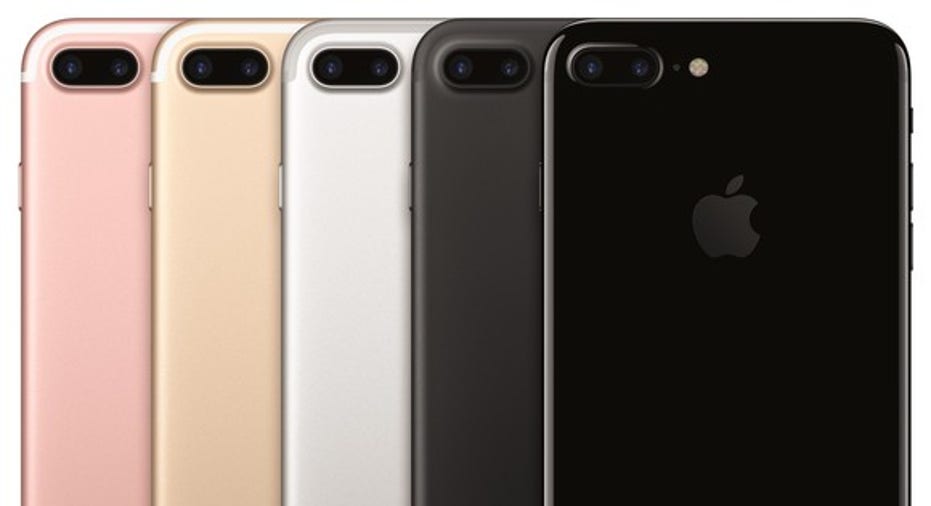The Apple Inc. A10 Fusion Chip Is a Ridiculous Beast

Image source: Apple.
Apple (NASDAQ: AAPL), a company known for its iPhones, iPads, and Macs, has become one of the world's premier processor design houses. Each year, the company introduces new processors to power its iPhones and iPads, and each year the company sets the bar for the kind of performance possible inside an ultra-mobile device.
With the company's latest processor, which the company calls the A10 Fusion (because "A10" simply wouldn't do), the company once again raises the bar. Let's take a closer look at just what Apple's chip team appears to have delivered this time.
A large boost in processor performance
Though the tear-downs aren't in, it is widely believed that the A10 is manufactured on the same 16-nanometer FinFET+ technology that some of the prior-generation A9 chips were manufactured in. This means that the majority of the performance gains that Apple was able to achieve with the A10 relative to the A9 were due to improvements in Apple's chip design.
Apple is claiming that in CPU tasks, the A10 is a full 40% faster than the prior-generation A9 processor. It's worth noting that the A9 already featured better per-core performance than any other competing smartphone processor, and not by just a small amount, either. The A10 merely serves to extend Apple's lead.
Interestingly, Apple says that the A10 implements a quad-core design. The chip has two high-performance cores for running performance-sensitive tasks. That's where the 40% improvement over A9 comes from.
The chip also has two "high-efficiency cores" that draw just a fifth of the power of the higher performance cores to handle tasks that "aren't performance limited" by the central processing unit, according to Apple's Phil Schiller.
Apple says that it has designed a custom "performance controller" that, Schiller says, "in real time makes sure the correct processes are running for maximum performance or maximum battery life."
Graphics enjoys a huge jump, too
According to Schiller, the A10 Fusion also sees a boost in graphics performance to the tune of 50% over the A9 chip inside the iPhone 6s and 6s Plus. Schiller indicated that the new graphics processor is a six-core design, just as the Imagination (NASDAQOTH: IGNMF) Series 7XT design inside the A9 was.
The fact that Apple says that graphics core count has stayed the same as performance has gone up and power consumption down seems to suggest some fairly aggressive changes in the underlying architecture of the graphics processor itself.
What we could be looking at is a next generation graphics processor from Imagination Technologies (perhaps the Series 8XT) or maybe even a custom design from Apple itself. Tear-downs and tests should reveal more details about this particular part of the chip later on.
Apple's chip design prowess really shows
In my mind, Apple easily designs the world's best mobile processors. Indeed, Apple seems to benefit tremendously from chip and device co-design. Apple's product teams know what kind of performance and user experience that they want to deliver, and those teams can feed those requirements to an extremely well-managed and well-funded internal chip design team to craft each portion of the chip in support of that experience.
When it's done correctly, building one's own chips can pay off in a bid way, as it has with previous-generation A-series processors and as I believe it will with the A10 Fusion in this year's iPhone 7.
A secret billion-dollar stock opportunity The world's biggest tech company forgot to show you something, but a few Wall Street analysts and the Fool didn't miss a beat: There's a small company that's powering their brand-new gadgets and the coming revolution in technology. And we think its stock price has nearly unlimited room to run for early in-the-know investors! To be one of them, just click here.
Ashraf Eassa has no position in any stocks mentioned. The Motley Fool owns shares of and recommends Apple. The Motley Fool has the following options: long January 2018 $90 calls on Apple and short January 2018 $95 calls on Apple. Try any of our Foolish newsletter services free for 30 days. We Fools may not all hold the same opinions, but we all believe that considering a diverse range of insights makes us better investors. The Motley Fool has a disclosure policy.



















